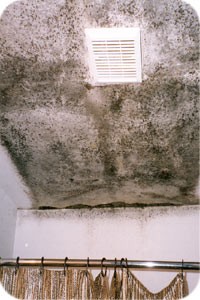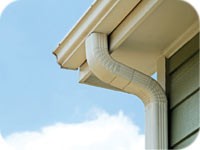Mould and your health in First Nations communities
Learn about mould, its health risks, how to get rid of it and prevention.
On this page
Know
What are the potential health risks of mould?
Home is where the heart is - it's where we spend time with family, friends and loved ones. Because we spend much of our time at home, home is also where our health is.
That's why it's important to make sure that our homes are healthy environments. The steps to make your home a healthy environment may not all come as a surprise to you. But you may be surprised at just how much those little actions can help your health!
There is a relationship between indoor mould, damp conditions and increased:
- Eye, nose and throat irritation
- Coughing and phlegm build-up
- Wheezing and shortness of breath
- Symptoms of asthma
- Allergic reactions
People respond to mould in different ways, depending upon the amount of exposure and the person's overall health. Some people are more vulnerable to the effects of mould than others. This includes children, the elderly and those with a weakened immune system or other medical condition(s), such as asthma, severe allergies or other respiratory conditions.
What is mould?
Mould is the common word for any fungus that grows on food or damp materials. Mould can be black, white or almost any colour. It often looks like a stain or smudge and it may smell musty.
In order to grow, mould needs moisture and a material it can live on. It then releases "spores" into the air which are small enough that people can actually breathe them in. Breathing in large amounts of these spores and the by-products they produce can negatively impact your health.
Common places for mould to grow indoors are on window sills, fabrics, carpets, and walls in kitchens, bathrooms, and laundry areas.
Recognize
Recognizing mould is an important step in protecting your health and your family's health. Check your home often.
Common sources of moisture
- Condensation on surfaces due to excessive humidity, lack of ventilation, or low temperature
- Steam or excess moisture in the air from baths/showers and cooking
- Water leakage, such as from a roof or plumbing leak, a cracked basement, or flooding
Common household materials mould can live on
- Drywall
- Wood, such as window sills, wall framing and firewood
- Paper products such as cardboard boxes
- Damp materials such as carpeting or furniture
Find out if you have mould in your home. Check:
- The basement
- Under or behind stored items
- Under the kitchen or bathroom sink
- On the wall or floor next to the bathtub or shower
- At the bottom edge of windows
- Closets
- Other damp places in your home
Not all mould is obvious. It can grow inside walls or above ceiling tiles. Check for mould in damp places or where water damage has happened.
Take action - Get rid of mould
What do I do if I find mould?
Before beginning any mould clean-up take steps to ensure that you do not expose yourself or others to mould spores. It is recommended that you wear an adequate breathing mask (N95 or better respirator), safety glasses or goggles and rubber gloves.
Even with adequate precautions, mould spores may become airborne. As a precaution during clean-up, children, the elderly and sensitive people such as those with asthma, allergies or other health problems should leave the house. Consult your physician if in doubt.
Clean up small areas
You can clean mould areas that are less than the size of a standard large garbage bag folded in half (1 square metre). Follow these steps:
- Find and fix the source.
- Try to find and fix the causes of the mould. For example, a plumbing leak could cause mould growth.
- The source of moisture should be fixed to try to make sure the mould cannot grow back once it's cleaned.
- Put on protective wear including a long sleeve shirt, appropriate and properly fitted dust mask, safety glasses or goggles and rubber gloves. These items are generally available in local stores.
- Prepare a bucket with water and a bit of dish detergent (preferably unscented) and another with clean water. If you are cleaning drywall, you can use baking soda instead of dish detergent.
- Clean the surface
- Wipe the surface with a rag dipped in the soapy water
- Sponge with a clean, damp rag and dry quickly
- Do not allow the drywall to get too wet
- Replace porous or absorbent materials (such as ceiling tiles, upholstery and carpeting) that become mouldy or are badly damaged. Dispose of the mouldy or damaged material appropriately.
Get help with larger areas

Contact your housing manager or your local Environmental Health Officer (EHO) if you suspect that your home has:
- One or more patches of mould larger than 1 square metre
- More than three patches of mould less than 1 square metre
- Patches of mould that keep coming back after cleaning
- A mould problem that you cannot solve on your own
If there is a lot of mould, (greater than 1 square metre), if mould comes back after repeated cleanings, or if a family member suffers from asthma or other respiratory problems as a result of mould, it is recommend that you contact your housing manager or your local Environmental Health Officer (EHO) to obtain advice on the cleaning of the mould in your house.
Take action - Prevent mould
How do I prevent mould?
Simple things that you can do:
When you see water or moisture act quickly
- Check home foundation, walls, windows, roof, plumbing, tubs and sinks for water leaks. If you find a leak or a spill, dry the area and fix the leak.
- Check window sills regularly for condensation or moisture, particularly during the cold months. If found, act quickly to dry the wet surface.
Ventilate your home
- Turn on an exhaust fan or open a window when showering or cooking. Let the fan run for a few minutes after you are finished.
- Check clothes dryer, bathroom and kitchen fans, stoves, and oil or propane heaters to be sure they are vented outside.
- Open windows, when practical. Use fans as needed.
Did you know?
Controlling moisture and keeping your home dry is the key to preventing and stopping mould growth.
Keep your home warm and ensure good air circulation
- Rooms or areas that become cold can encourage condensation to form and surrounding materials to become damp and mouldy.
- Keep furniture and other belongings away from exterior walls to allow warm air to circulate.
Remove items that may cause mould
- Reduce the amount of stored materials, especially in the basement and closets
- Throw out wet and badly damaged or musty smelling items
- Do not store firewood inside the home
- Remove carpet in bathroom and basements that are damp
- Avoid storing items in cardboard boxes on basement floors
Keep your home clean and dry
- Clean and dry surfaces that get wet, such as:
- Drip pans in your air conditioner, refrigerator, and dehumidifier
- Washing machine/tub, bathtub/shower, and surrounding walls
- Vacuum carpets and furniture often.
- Keep drains in kitchen, bathroom and basement floor clear of debris
- Use air conditioners and dehumidifiers during humid weather, if possible
Minimize other indoor moisture sources
- Avoid hanging laundry to dry indoors when possible. Remove dryer lint after each use
- Don't over-water plants and watch for signs of mould in the plants
- Take out garbage regularly
- Keep your sump pit covered
Prevent water from entering your home

- Install downspout extensions to take rainwater and melted snow away from the home
- Make sure eaves troughs/roof gutters and downspouts are connected and working. Clean and repair regularly
- Make sure the ground slopes away from the home foundation, so that water does not collect around the foundation and enter the home
"Mould in housing is one of the issues that can impact your health and your family's health. Yes, when there's a lot of mould in a home, it's not a simple problem to address and usually requires professional help. However, everyone has a role to play in preventing mould and understanding what to do to clean up small areas and how to get help with larger areas. Even the little things you do can help your health!"